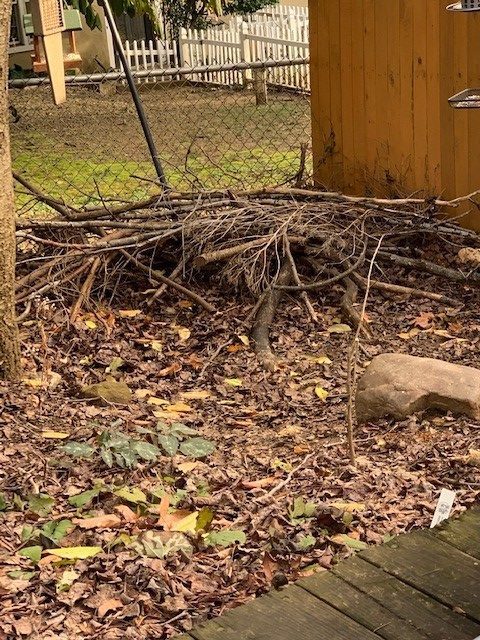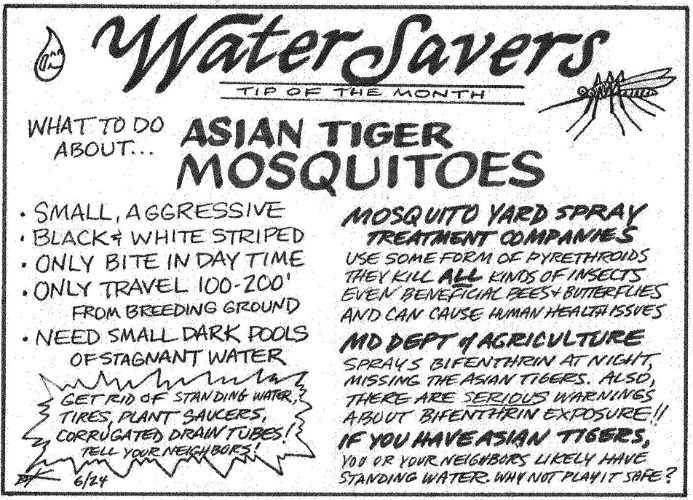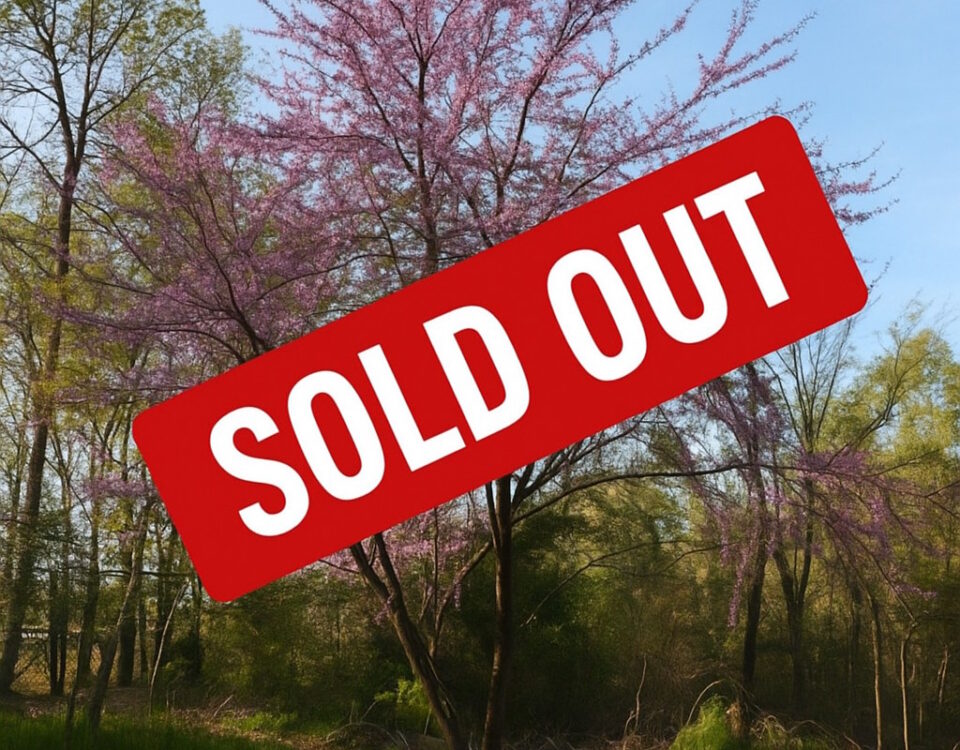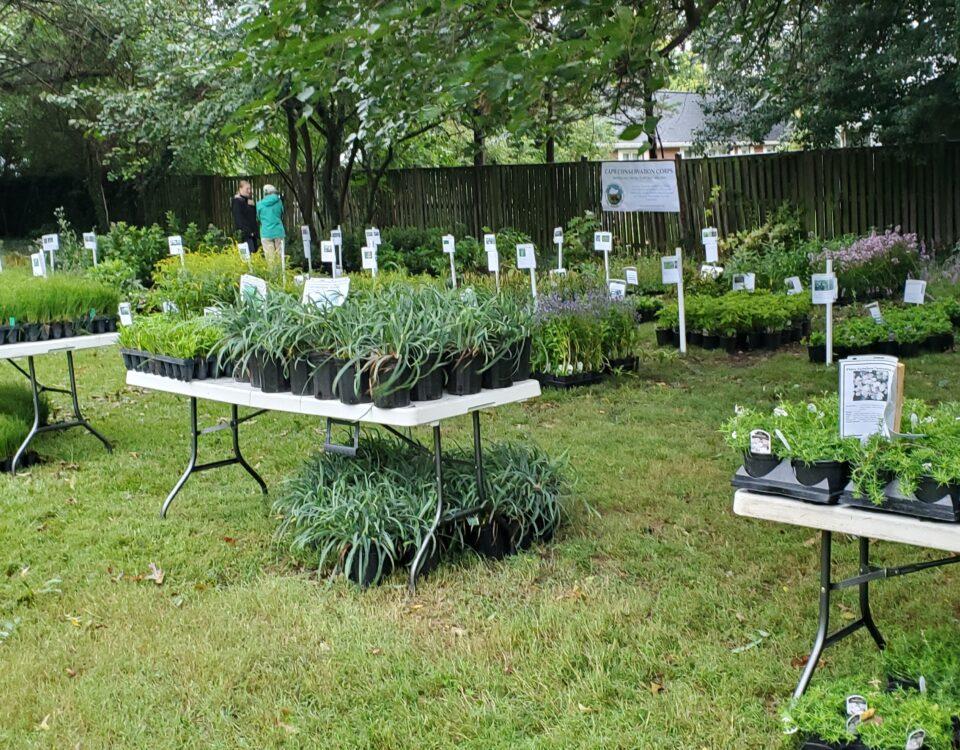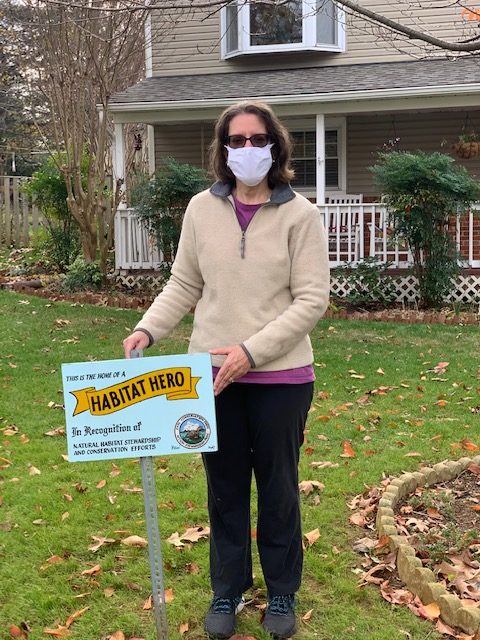
Habitat Hero – December 2020
December 20, 2020Our activities in 2019-2020
January 29, 2021By: Stacey Wildberger
The Habitat Hero Award is something we have been handing out for three years now to people in the neighborhood who are creating wildlife habitats in their own back yards. Many people are unsure what means or how to get started. Some of you are already doing it and don’t even realize it. Where and how do you get started on creating backyard habitats? All living creatures have basic needs of shelter, food and water so we will examine how we can provide that on our property for the local fauna.
Water is a very basic need we all have It is very easy to provide water sources for wildlife. It can range from a backyard pond to a bird bath to a water station or even as small as a dish of water with pebbles. The pond will not only provide the needed water but will become a haven for frogs, toads, dragonflies, and pollinators. A bird bath or water station is simple to put out and maintain. What fun to look out and see a small flock of blue birds crowded in your bird bath splashing around! Of course be sure to empty and clean it often to avoid mosquito larvae.

Another necessity to sustain life is food. Obviously each species has its own requirements for food but we will examine a few natural ideas. Food sources can be as basic as leaving dead leaves or keeping a partial trunk from a dead tree (called a snag). Birds can find all kinds of insects in the leaf litter and in the trunk of that tree. Woodpeckers will delight in beetle larva, flickers will search through the fallen leaves for hours. Native plants will bring in the butterflies to lay their eggs on their favorite host plants and those caterpillars will be used by 96% of the terrestrial birds to raise their babies. Did you know it takes 7,000-9,000 caterpillars to raise a clutch of chickadees? Consider adding in some night blooming plants to support moths, having something in bloom throughout all seasons and having a variety of types of plants, groundcovers, flowering plants, shrubs and trees. The plants will provide nectar, seeds, nuts, berries, pollen and insects; something for everyone!
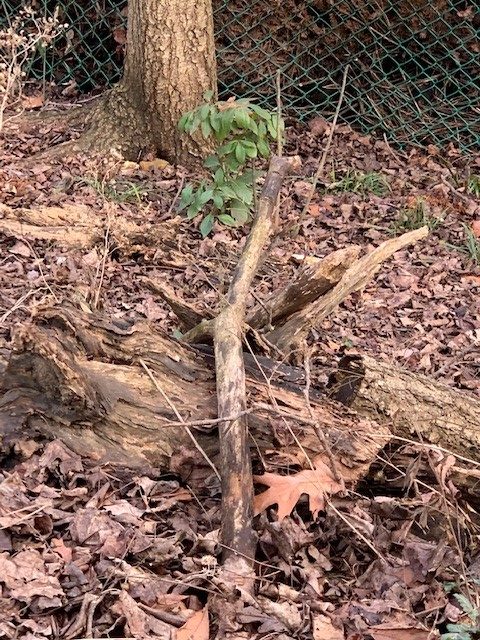
Shelter and nesting areas are also an important need for survival. Animals need a place to feel safe from predators to raise their young. We can help birds by providing nesting boxes in a variety of styles for different species or nesting materials (natural is best) such as small twigs, dead leaves, dried grass, feathers, plant “fluff”, pine needles and bark strips; all make safe and excellent nest materials. Avoid string, plastics, tinsel, cellophane, foil and dryer lint. Planting shrubs and trees will provide natural areas for nest building, and so is leaving a “snag” on your property. The cavity nesters will love to carve out a nest in the decaying bark. Some birds will also use mud. So if you keep a bare spot in the landscape you could help swallows, phoebes and robins construct their nests. Other wildlife will benefit from the fallen leaves to shelter in. Did you know there are hundreds of caterpillars that will complete their life cycles on a single species of tree – the Oak – which is considered a keystone species (Doug Tallamy)? The butterfly or moth will lay their eggs, the caterpillars will hatch, eat the oak leaves, hang on to a branch as chrysalis or drop to the ground to pupate in the ground . In a typical landscape that tree will be surrounded by grass or worse pavement and typically that moth or butterfly will die because it cannot penetrate the ground. If instead we flipped that on its head and planted around our trees a layered garden to include groundcovers, flowering perennials, small shrubs you will greatly increase their chance of survival and you will have a lovely landscape as well.
After a storm we go out into the backyard and clean up all the leaves, twigs, branches that may have been blown down and set them out on the curb, off to the landfill. What if instead you took the “debris” and made a small pile off to the side or back of the property to provide a safe haven for wildlife, a rabbit may seek shelter, a salamander may call it as it home, snakes may hunt rodents there, butterflies and other insects may overwinter and birds can use it as a hiding spot or safe place as the go-between area of the yard. Consider placing it in between two areas like the woods edge and a pond. It is a great transition area as they move between the two spots. Allowing vines to grow over the brush or log pile will help keep it looking well intentioned. I leave my Christmas tree in the very back of property ever year as it offers the benefits of a brush pile. Of course a pond can provide many opportunities to shelter for amphibians and aquatic life, no matter the size.
I watched the entomologist Doug Tallamy today and I am going to close with the eight things he suggests we can do to restore the ecosystem to your backyard which will create a habitat-friendly yard:
- Cut your lawn area by at least ½ then add in native plants
- Plant for specialized bees, the generalist will use them too
- Remove the invasive plants from your yard that are outcompeting the natives (English ivy, Barberry, porcelain berry, privet, to name a few)
- Plant keystone species that will offer the most bang for your buck (oak, native cherries, native willows, goldenrods, aster and native sunflowers)
- Landscape for caterpillars – see my description above about layering plants around your trees
- Reduce light pollution- use motion sensors, replace white bulbs with yellow or use LED lights
- Cancel your mosquito spraying- the sprays kill anything despite what ”Joe” tells you. Natural products are still poison! Need to stop them at the beginning of the life cycle –larval stage. Fill a bucket then add a mosquito dunk after they have laid their eggs.
- Eliminate all insecticides. Insects are not the enemy, they are bird food
I highly recommend you read Doug Tallamy’s new book “Nature’s Best Hope” this winter in preparation for this spring. It will help you plan your gardens and landscape to create a more friendly and inviting habitat to the “little things that run the world”- insects – (E. O. Wilson.) If we start by creating a safe place for insects the birds, mammals, amphibians and reptiles will follow. It is no longer enough to think nature exists somewhere out there, it begins in your own backyard and Tallamy’s book will help you create your own Homegrown National Park, and maybe you will be our next Habitat Hero. I am happy to help you come up with some ideas of where to start.
Contact me at [email protected]


